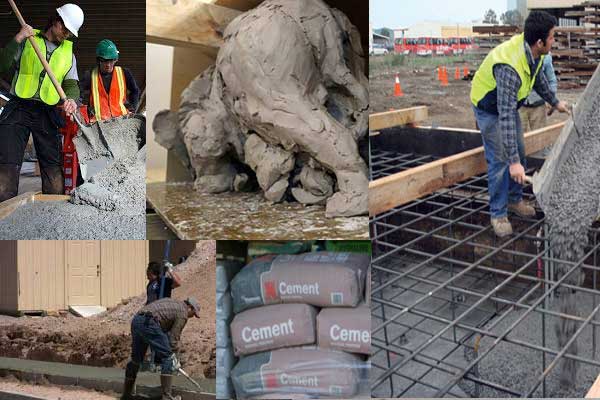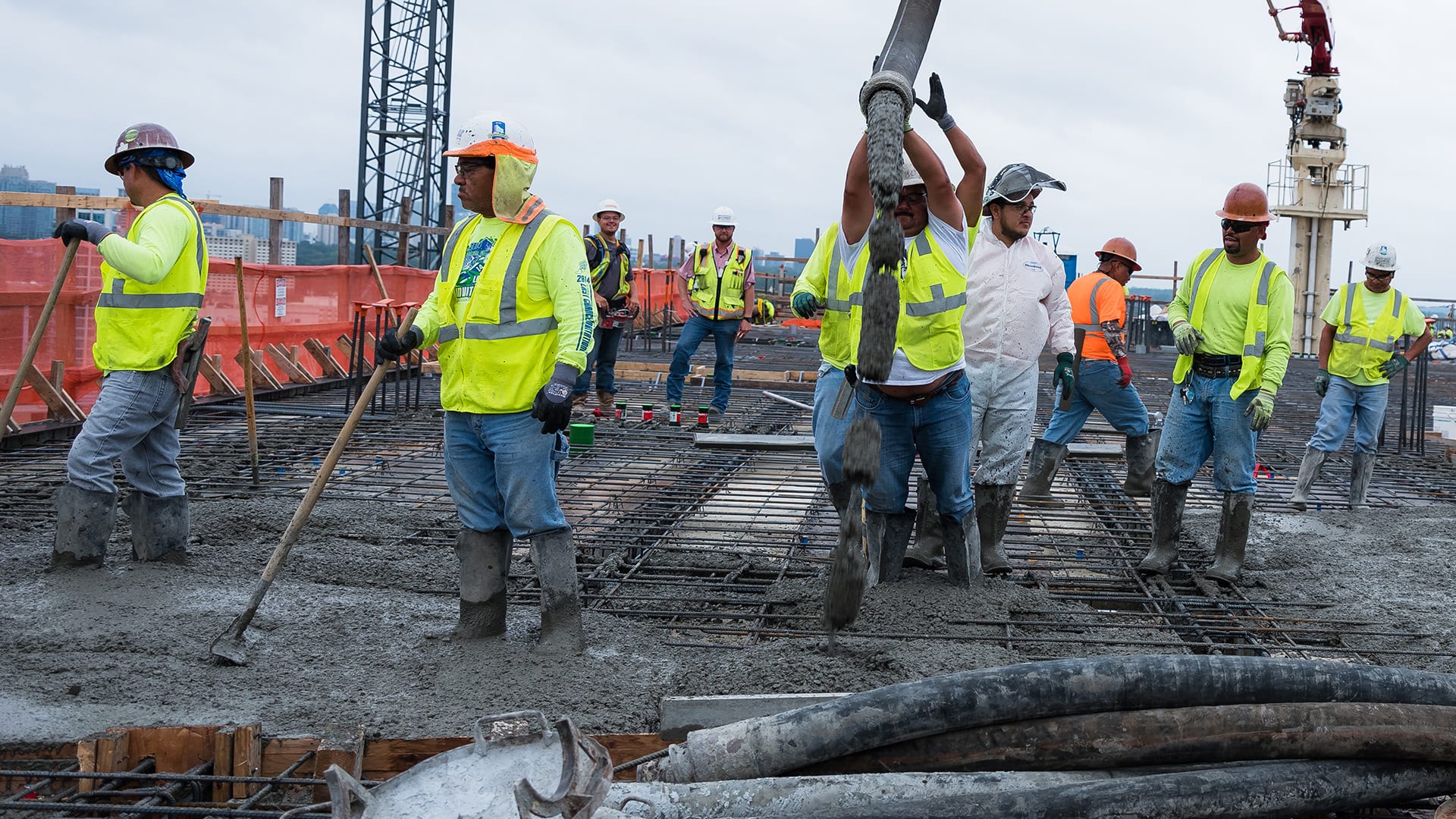The Essential Duty of Concrete Structure in Structural Integrity and Long Life
When it involves building a property, the foundation is much more important than you could assume. Concrete structures give unparalleled toughness and longevity, guaranteeing your framework can stand up to numerous ecological difficulties. Without a strong base, you run the risk of prospective issues like moving or fracturing, which can compromise safety and value. Comprehending the subtleties of concrete structures could be the key to preserving your investment for many years to find. So, what should you take into consideration next?
Comprehending the Relevance of Concrete Foundations
Concrete foundations are essential to the total security of any kind of framework, as they provide the important support needed to endure different loads and ecological problems. When you assume concerning constructing a home or a business room, the structure is the initial point you need to take into consideration. It acts as an obstacle versus moisture, securing your residential property from water damages. A well-placed concrete foundation additionally avoids settling and changing, which can cause cracks in wall surfaces and floors. You'll wish to ensure that the foundation is appropriately developed and enhanced, as this affects the long life of your building. In addition, a solid foundation can enhance power effectiveness by reducing air leaks. Remember, neglecting the relevance of a concrete foundation can cause costly repairs down the line. Spending in a quality foundation upfront is crucial for the integrity and resilience of your structure.
Advantages of Concrete Structures for Architectural Honesty
While lots of elements add to a structure's structural honesty, concrete foundations provide unequaled longevity and strength. You'll value that concrete can endure severe weather condition conditions, withstanding both moisture and temperature level fluctuations. This resilience indicates your structure is much less likely to experience fracturing or shifting with time, which can jeopardize its safety.Additionally, concrete's integral weight offers a strong base, preventing movement throughout natural occasions like quakes or floods. When you pick a concrete foundation, you're likewise selecting reduced upkeep; unlike timber, it won't rot or bring in parasites, saving you money and time in repairs.Moreover, concrete's fire resistance uses included safety and security, guaranteeing your framework can withstand high temperature levels without substantial damage. Generally, buying a concrete foundation means you're prioritizing the long-term stability and honesty of your structure, making it a sensible option for any type of building and construction project.
Typical Sorts Of Concrete Foundations
When it comes to building foundations, recognizing the usual types of concrete foundations can assist you make educated selections for your project. The most common kinds consist of slab-on-grade, crawl room, and full basement foundations.A slab-on-grade foundation is a basic, cost-efficient option, where a thick concrete slab is poured directly on the ground. This type works well in warm environments, as it lessens warmth loss.Crawl room structures elevate the home slightly above ground, permitting ventilation and access to pipes and electrical systems. This design can aid prevent moisture issues.Full basement foundations offer additional living or storage room while providing superb architectural support. They call for more excavation and are typically made use of in colder environments to stop frost heave.
Factors to Take Into Consideration When Creating a Concrete Structure

Ideal Practices for Putting Up Concrete Foundations
When you're setting up a concrete structure, correct site prep work is vital to ensure security (West Coast General Engineering industrial concrete). You'll likewise require to comprehend support techniques to boost strength and sturdiness. Lastly, don't ignore the curing process, as it plays a basic role in attaining a solid foundation
Website Prep Work Significance
Although it may seem straightforward, correct site prep work is crucial for guaranteeing a solid and resilient concrete structure. Beginning by removing the area of any type of debris, greenery, or natural material that might compromise the structure's integrity. Next, assess the soil kind and compaction; you could require to dig deep into or add materials to create a stable base. Degree the ground to assure also weight distribution and avoid clearing up problems later on. Installing correct water drainage systems is likewise necessary to prevent water buildup, which can compromise the foundation gradually. Mark out the structure's measurements precisely to guide the pouring process. By complying with these steps, you'll set the phase for a successful concrete structure that stands the test of time.
Support Methods Explained
As soon as the site is appropriately prepared, the following action in ensuring a durable concrete structure includes executing reliable support techniques. You need to start by utilizing steel rebar, which offers tensile stamina and assists protect against splitting. Lay the rebar in a grid pattern, ensuring it's raised utilizing spacers to preserve appropriate insurance coverage. In addition, take into consideration using wire mesh for extra support, especially in areas subject to heavy loads. Don't forget to connect the rebar crossways safely with cable. For larger foundations, fiber reinforcement can improve durability, minimizing the risk of shrinking fractures. Always follow local building ordinance and guidelines to ensure conformity. By using these support methods, you'll considerably improve your structure's stamina and durability, laying a strong foundation for your framework.
Healing Process Fundamentals
To ensure your concrete foundation cures properly, it is essential to maintain ample dampness and temperature you can try here conditions instantly after putting. Beginning by covering the surface area with a wet cloth or plastic bed linen to maintain wetness. This maintains the concrete moisturized, preventing splits and making sure stamina. You ought to additionally check the temperature; perfect healing problems are between 50 ° F and 90 ° F. If it's also warm, mist the surface area on a regular basis to avoid rapid dissipation. For winter, take into consideration utilizing shielding coverings to maintain heat. Go for a healing period of at the very least 7 days, as this is vital for optimum stamina growth. By adhering to these ideal techniques, you'll improve your structure's sturdiness and longevity, making sure structural stability for years to find.
Upkeep of Concrete Foundations for Long Life
To keep your concrete structure solid and long lasting, normal evaluations are crucial. You ought to additionally guarantee efficient drainage services remain in place to prevent water damages. If you identify any fractures, resolving them promptly will save you from larger problems down the line.

Normal Inspections and Assessments
While regular inspections and assessments may feel like a duty, they're necessary for keeping the stability of your concrete structure. By consistently checking for splits, changes, or indicators of wear, you can catch prospective problems prior to they rise right into expensive repair work. Seek any kind of water merging around the structure or uncommon settling, as these can indicate underlying problems. It's also a good idea to check any kind of modifications in your home's framework, like doors that stick or home windows that do not open efficiently. Maintaining a document of your inspections aids track modifications in time, enabling proactive upkeep. Eventually, these analyses assure your structure stays steady, sustaining the long life and security of your entire framework. Don't forget this critical aspect of homeownership!
Reliable Water Drainage Solutions
Routine inspections can disclose problems like drainage issues that might endanger your concrete foundation's security. To prevent water buildup, assure your rain gutters and downspouts straight water away from the structure. Installing French drains can effectively reroute surface and groundwater, minimizing pressure on your structure walls. Furthermore, grading the dirt around your home helps ensure that water flows away, instead of merging near your foundation.Consider utilizing sump pumps in locations susceptible to flooding, as they proactively remove excess water. Consistently look for obstructions in drainage systems and clear them without delay. You'll safeguard your structure's integrity and long life by taking these proactive steps. Keep in mind, efficient water drainage services are essential for preserving a solid, resilient concrete structure.
Motivate Crack Services
When you observe cracks in your concrete structure, addressing them immediately is important for keeping its durability. Tiny splits can quickly evolve into bigger problems, jeopardizing the architectural honesty of your home. Routinely check your structure for indicators of damage, such as horizontal or vertical fractures. If you identify any kind of, don't wait-- repair them right away. You can utilize epoxy shots or concrete patching substances, which are reliable for sealing cracks. Always comply with the producer's directions and take into consideration consulting a professional for significant damage. Remember, timely repair work not only improve your foundation's sturdiness however additionally conserve you money in the long run by preventing more extensive repairs down the line. Stay proactive, and your foundation will certainly continue Click This Link to be solid and safe and secure.
Resolving Usual Concerns With Concrete Structures
Concrete foundations can deal with various issues over time, making it critical to identify and resolve them without delay. Among the most common problems is fracturing, which can happen as a result of temperature level variations or resolving dirt. If you see splits, it's vital to evaluate their size and deepness; little cracks can often be secured, while bigger ones may call for specialist evaluation.Water invasion is another major concern. Excess moisture can bring about mold growth and structural deterioration. Warranty correct drain around your foundation to alleviate this danger. Furthermore, search for indications of shifting or bowing wall surfaces, as this can show underlying problems with your structure's stability.Regular evaluations are basic to capture these troubles early. If you find any concerning signs, do not hesitate to consult a foundation professional. By staying positive, you can keep the honesty and longevity of your concrete foundation, ensuring your home continues to be secure and safe.
Regularly Asked Questions
Exactly How Does Soil Kind Affect Concrete Foundation Efficiency?
Dirt kind considerably influences concrete structure efficiency. If you've obtained extensive clay, for instance, it can trigger changing and fracturing. Sandy soil could lead to resolving. Recognizing your dirt assists guarantee a secure structure.
Can Concrete Foundations Be Fixed if Harmed?
Yes, you can fix damaged concrete foundations. Depending upon the level of the damages, methods like epoxy injection or slab jacking can recover security. It's finest to speak with a professional for reliable solutions.
What Is the Regular Life Expectancy of a Concrete Structure?
A concrete structure generally lasts 30 to 100 years, depending on variables like dirt problems, environment, and maintenance. You'll intend to watch on it to ensure it remains in great form throughout its life expectancy.
Exist Alternative Products to Concrete for Foundations?
Yes, there are options to concrete for structures, like steel, hardwood, or perhaps recycled products. Each option has one-of-a-kind you could try this out benefits and drawbacks, so you should consider your job's particular needs when selecting the best material.
Exactly How Does Environment Impact Concrete Structure Sturdiness?
Climate significantly affects concrete foundation resilience (West Coast General Engineering concrete foundation). Extreme temperature levels, dampness, and freeze-thaw cycles can damage the material, resulting in cracks and structural concerns. You should take into consideration neighborhood climate conditions when preparing your structure to ensure long-lasting efficiency